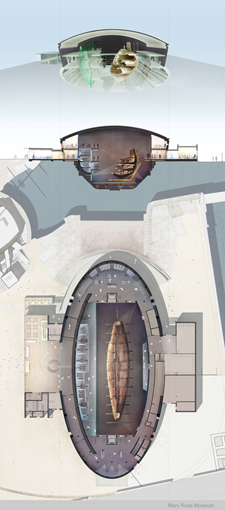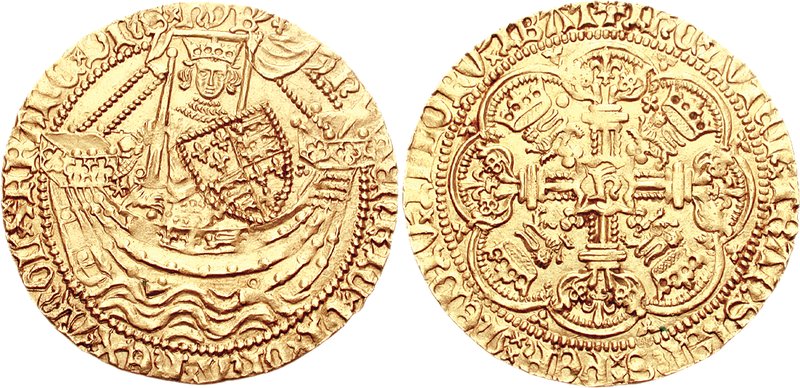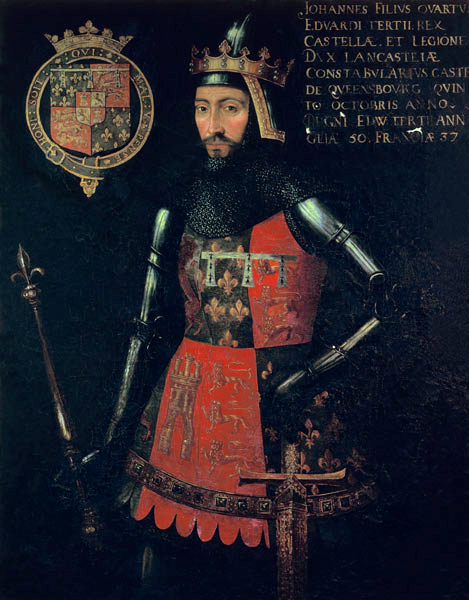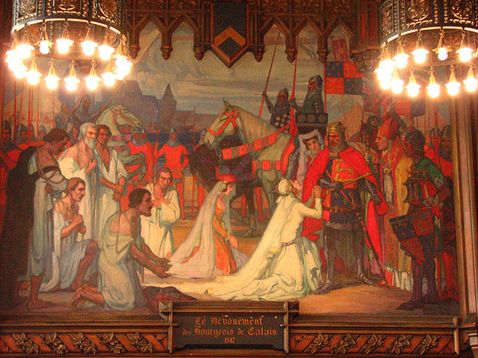|
Mary Rose
The ''Mary Rose'' was a carrack in the English Tudor navy of Henry VIII of England, King Henry VIII. She was launched in 1511 and served for 34 years in several wars against France, Scotland, and Brittany. After being substantially rebuilt in 1536, she saw her last action on 1545. She led the attack on the galleys of a French invasion fleet, but sank off Spithead in the Solent, the strait north of the Isle of Wight. The wreck of the ''Mary Rose'' was located in 1971 and was raised on 11 October 1982 by the Mary Rose Trust in one of the most complex and expensive maritime salvage projects in history. The surviving section of the ship and thousands of recovered artefacts are of great value as a Tudor period time capsule. The excavation and raising of the ''Mary Rose'' was a milestone in the field of maritime archaeology, comparable in complexity and cost to the raising of the 17th-century Swedish warship ''Vasa (ship), Vasa'' in 1961. The ''Mary Rose'' site is designated under ... [...More Info...] [...Related Items...] OR: [Wikipedia] [Google] [Baidu] |
Anthony Roll
The Anthony Roll is a written record of ships of the English Tudor navy of the 1540s, named after its creator, Anthony Anthony. It originally consisted of three rolls of vellum, depicting 58 naval vessels along with information on their size, crew, armament, and basic equipment. The rolls were presented to King Henry VIII in 1546, and were kept in the royal library. In 1680 King Charles II gave two of the rolls to Samuel Pepys, who had them cut up and bound as a single volume book, which is now in the Pepys Library at Magdalene College, Cambridge. The third roll remained in the royal collection until it was given by King William IV to his daughter Lady Mary Fox, who sold it to the British Museum in 1858; it is now owned by the British Library. The Anthony Roll is the only known fully illustrated inventory of ships of the English navy in the Tudor period. As the work of a successful state official in 16th-century England, the artistic value of the Anthony Roll has been descri ... [...More Info...] [...Related Items...] OR: [Wikipedia] [Google] [Baidu] |
Mary Rose Museum
The Mary Rose Museum is a historical museum located at HMNB Portsmouth, Historic Dockyards in Portsmouth in the United Kingdom run by the Mary Rose Trust. Overview The museum is dedicated to the 16th-century Tudor navy warship ''Mary Rose'' as well as the historical context in which she was active. The museum opened in 1984 and displays artefacts from the ship as well as the ship itself in a dedicated ship hall. Since opening it has been visited by over a million people. History In September 2009 the ship hall was closed to allow the start of construction of a new museum that was opened at the end of May 2013. The Mary Rose Museum (2013) was designed by architects WilkinsonEyre, Perkins and Will, Perkins+Will and built by construction firm Warings. The construction was challenging because the museum was built over the ship in the dry dock, which is a listed monument. During construction of the museum, conservation of the hull continued inside a sealed "hotbox". In April 2013 ... [...More Info...] [...Related Items...] OR: [Wikipedia] [Google] [Baidu] |
Anne Of Brittany
Anne of Brittany (; 25/26 January 1477 – 9 January 1514) was reigning Duchess of Brittany from 1488 until her death, and Queen of France from 1491 to 1498 and from 1499 to her death. She was the only woman to have been queen consort of France twice. During the Italian Wars, Anne also became Queen of Naples, from 1501 to 1504, and Duchess of Milan, in 1499–1500 and from 1500 to 1512. Anne was raised in Nantes during a series of conflicts in which the King of France sought to assert his suzerainty over Brittany. Her father, Francis II, Duke of Brittany, was the last male heir of the House of Montfort. Upon his death in 1488, Anne became duchess regnant of Brittany, countess of Nantes, Montfort, and Richmond, and viscountess of Limoges. She was only 11 at that time, but she was already considered a desirable prospect for marriage because of Brittany's strategic position. The next year, she married Maximilian I of Austria by proxy, but Charles VIII of France saw this ... [...More Info...] [...Related Items...] OR: [Wikipedia] [Google] [Baidu] |
Henry V Of England
Henry V (16 September 1386 – 31 August 1422), also called Henry of Monmouth, was King of England from 1413 until his death in 1422. Despite his relatively short reign, Henry's outstanding military successes in the Hundred Years' War against Kingdom of France, France made Kingdom of England, England one of the strongest military powers in Europe. Immortalised in Shakespeare's "Henriad" plays, Henry is known and celebrated as one of the greatest warrior-kings of medieval England. Henry of Monmouth, the eldest son of Henry IV of England, Henry IV, became heir apparent and Prince of Wales after his father seized the throne in 1399. During the reign of his father, the young Prince Henry gained military experience fighting the Welsh during the Welsh Revolt, revolt of Owain Glyndŵr, and against the powerful Percy family of Northumberland. He played a central part at the Battle of Shrewsbury despite being just sixteen years of age. As he entered adulthood, Henry played an increasing ... [...More Info...] [...Related Items...] OR: [Wikipedia] [Google] [Baidu] |
House Of Tudor
The House of Tudor ( ) was an English and Welsh dynasty that held the throne of Kingdom of England, England from 1485 to 1603. They descended from the Tudors of Penmynydd, a Welsh noble family, and Catherine of Valois. The Tudor monarchs ruled the Kingdom of England and the Lordship of Ireland (later the Kingdom of Ireland) for 118 years with five monarchs: Henry VII of England, Henry VII, Henry VIII, Edward VI, Mary I and Elizabeth I. The Tudors succeeded the House of Plantagenet as rulers of the Kingdom of England, and were succeeded by the Scottish House of Stuart. The first Tudor monarch, Henry VII, descended through his mother from the House of Beaufort, a legitimised branch of the English royal House of Lancaster, a cadet house of the Plantagenets. The Tudors of Penmynydd, Tudor family rose to power and started the Tudor period in the wake of the Wars of the Roses (1455–1487), which left the main House of Lancaster (with which the Tudors were aligned) extinct in the male ... [...More Info...] [...Related Items...] OR: [Wikipedia] [Google] [Baidu] |
Henry VII Of England
Henry VII (28 January 1457 – 21 April 1509), also known as Henry Tudor, was King of England and Lord of Ireland from his seizure of the crown on 22 August 1485 until his death in 1509. He was the first monarch of the House of Tudor. Henry was the son of Edmund Tudor, 1st Earl of Richmond, and Lady Margaret Beaufort. His mother was a great-granddaughter of John of Gaunt, an English prince who founded the Lancastrian cadet branch of the House of Plantagenet. His father was the half-brother of the Lancastrian king Henry VI. Edmund Tudor died three months before his son was born, and Henry was raised by his uncle Jasper Tudor, a Lancastrian, and William Herbert, a supporter of the Yorkist branch of the House of Plantagenet. During Henry's early years, his uncles and the Lancastrians fought a series of civil wars against the Yorkist claimant, Edward IV. After Edward retook the throne in 1471, Henry spent 14 years in exile in Brittany. He attained the throne when his f ... [...More Info...] [...Related Items...] OR: [Wikipedia] [Google] [Baidu] |
House Of Lancaster
The House of Lancaster was a cadet branch of the royal House of Plantagenet. The first house was created when King Henry III of England created the Earldom of Lancasterfrom which the house was namedfor his second son Edmund Crouchback in 1267. Edmund had already been created Earl of Leicester in 1265 and was granted the lands and privileges of Simon de Montfort, 6th Earl of Leicester, after de Montfort's death and attainder at the end of the Second Barons' War. When Edmund's son Thomas, 2nd Earl of Lancaster, inherited his father-in-law's estates and title of Earl of Lincoln he became at a stroke the most powerful nobleman in England, with lands throughout the kingdom and the ability to raise vast private armies to wield power at national and local levels. This brought himand Henry, 3rd Earl of Lancaster, Henry, his younger brotherinto conflict with their cousin King Edward II, leading to Thomas's execution. Henry inherited Thomas's titles and he and his son, who was also calle ... [...More Info...] [...Related Items...] OR: [Wikipedia] [Google] [Baidu] |
House Of York
The House of York was a cadet branch of the English royal House of Plantagenet. Three of its members became kings of England in the late 15th century. The House of York descended in the male line from Edmund of Langley, 1st Duke of York, the fourth surviving son of Edward III. In time, it also represented Edward III's senior line, when an heir of York married the heiress-descendant of Lionel, Duke of Clarence, Edward III's second surviving son. It is based on these descents that they claimed the English crown. Compared with its rival, the House of Lancaster, it had a superior claim to the throne of England according to cognatic primogeniture, but an inferior claim according to agnatic primogeniture. The reign of this dynasty ended with the death of Richard III of England at the Battle of Bosworth Field in 1485. It became extinct in the male line with the death of Edward Plantagenet, 17th Earl of Warwick, in 1499. Descent from Edward III The fourth surviving legi ... [...More Info...] [...Related Items...] OR: [Wikipedia] [Google] [Baidu] |
War Of The Roses
The Wars of the Roses, known at the time and in following centuries as the Civil Wars, were a series of armed confrontations, machinations, battles and campaigns fought over control of the English throne from 1455 to 1487. The conflict was fought between supporters of the House of Lancaster and House of York, two rival cadet branches of the royal House of Plantagenet. The conflict resulted in the end of Lancaster's male line in 1471, leaving the Tudor family to inherit their claim to the throne through the female line. Conflict was largely brought to an end upon the union of the two houses through marriage, creating the Tudor dynasty that would subsequently rule England. The Wars of the Roses were rooted in English socio-economic troubles caused by the Hundred Years' War (1337–1453) with France, as well as the quasi-military bastard feudalism resulting from the powerful duchies created by King Edward III. The mental instability of King Henry VI of the House of Lancaster ... [...More Info...] [...Related Items...] OR: [Wikipedia] [Google] [Baidu] |
Calais
Calais ( , , traditionally , ) is a French port city in the Pas-de-Calais department, of which it is a subprefecture. Calais is the largest city in Pas-de-Calais. The population of the city proper is 67,544; that of the urban area is 144,625 (2020). and it is reflected in the city's name in the local Picard language, ''Calés''. Other archaic names for the city are Portuguese ''Calêsio'' and German ''Kalen''. ''Kales'', the city's historic name in Dutch and West Flemish (once spoken in the area) was retained until more recently in the name for the Strait of Dover, ''Nauw van Kales'', and is still used in Dutch sources wishing to emphasise former linguistic ties to the area. Though the modern French spelling of ''Calais'' gradually supplanted other variants in English, the pronunciation () persisted and survives in other towns named for the European city including Calais, Maine, and Calais, Vermont, in the United States. In " De Gustibus" (1855), Robert Browning r ... [...More Info...] [...Related Items...] OR: [Wikipedia] [Google] [Baidu] |
Hundred Years' War
The Hundred Years' War (; 1337–1453) was a conflict between the kingdoms of Kingdom of England, England and Kingdom of France, France and a civil war in France during the Late Middle Ages. It emerged from feudal disputes over the Duchy of Aquitaine and was triggered by English claims to the French throne, a claim to the French throne made by Edward III of England. The war grew into a broader military, economic, and political struggle involving factions from across Western Europe, fuelled by emerging nationalism on both sides. The periodisation of the war typically charts it as taking place over 116 years. However, it was an intermittent conflict which was frequently interrupted by external factors, such as the Black Death, and several years of truces. The Hundred Years' War was a significant conflict in the Middle Ages. During the war, five generations of kings from two rival Dynasty, dynasties fought for the throne of France, then the wealthiest and most populous kingd ... [...More Info...] [...Related Items...] OR: [Wikipedia] [Google] [Baidu] |
Early Modern France
The Kingdom of France in the early modern period, from the French Renaissance, Renaissance () to the French Revolution, Revolution (1789–1804), was a monarchy ruled by the House of Bourbon (a Capetian dynasty, Capetian cadet branch). This corresponds to the so-called ''Ancien Régime'' ("old rule"). The territory of France during this period territorial evolution of France, increased until it included essentially the extent of the France, modern country, and it also included the territories of the French colonization of the Americas, first French colonial empire overseas. The period is dominated by the figure of the "Sun King", Louis XIV (his reign of 1643–1715 being one of the List of longest-reigning monarchs, longest in history), who managed to eliminate the remnants of medieval France, medieval feudalism and established a centralized government, centralized state under an absolute monarchy, absolute monarch, a system that would endure until the French Revolution and First ... [...More Info...] [...Related Items...] OR: [Wikipedia] [Google] [Baidu] |







